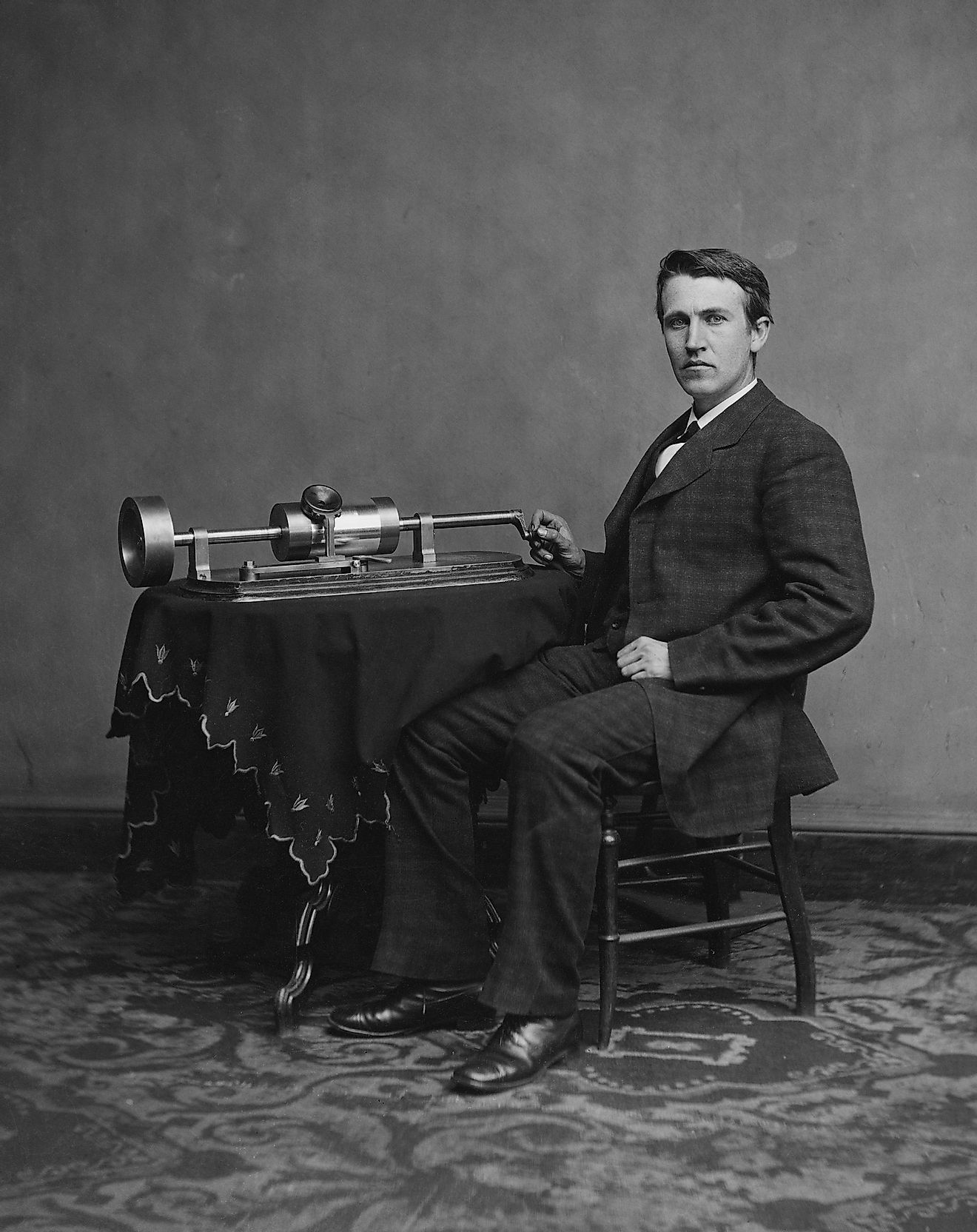Who Was Thomas Edison?

5. Early Life
The great American inventor, Thomas Edison was born in Milan, Ohio in 1847. He was the youngest of seven children. Edison’s father, Samuel, was a politically active Loyalist originally from Nova Scotia, Canada while Nancy, his mother, was a teacher. Edison began experiencing hearing problems during his childhood. Throughout his life, the renown inventor gave varying stories for his partial deafness, but it’s widely believed that the damage to his ears was most likely the result of numerous untreated ear infections and scarlet fever during his younger years. Due in large part to his independent nature, much of Edison’s early education came in the form of schooling at home, courtesy of his mother.
4. Career
Thomas Edison conducted most of his work in the personal research lab he established in Menlo Park, New Jersey. Edison’s prolific career earned him the popular nickname “The Wizard of Menlo Park”. In the early days, he worked on developing telegraphic instruments before gaining fame with his 1877 invention of the phonograph. Amongst Edison’s many inventions include such innovations as the carbon transmitter, electric light bulb, fluoroscope, and kinetoscope. At the end of his career, Edison held over a thousand patents. These included 195 for the phonograph, 389 involving electrical light and power devices, 141 for batteries, 34 for the telephone, as well as 150 connected with his telegraphic innovations.
3. Discoveries and Inventions
Among all of his inventions, some of Edison’s most significant and well-received innovations involved groundbreaking audio-visual devices such as the phonograph and kinetoscope. In 1877, the inventor gained national attention and acclaim for his use of tin foil and a cylinder with grooves to successfully record sound. The inventor even demonstrated his new creation in Washington in front of an audience of dignitaries which included President Hayes. Edison’s work in film resulted in the invention of the kinetograph.This device became a popular feature in penny arcades because it enabled people to view short films. Edison’s kinetograph proved to be revolutionary and played a major role in the birth of cinema.
2. Challenges
Thomas Edison faced many personal challenges including his lack of a formal education. Due to behavioral problems, Edison was taken out of school and instead taught by his mother. Nancy Edison succeeded in instilling a profound love for reading into her youngest child. Thomas became an avid reader and someone with a keen interest in learning and educating himself about such subjects as literature and science. Another major challenge faced by Edison was his partial deafness which began during his childhood. It’s thought that the inventor had 80% hearing loss in his right ear and was deaf in his left. Despite the odds, Edison persevered and refused to allow his disability to hinder his ambitions.
1. Death and Legacy
Thomas Edison died in October 1931 at the age of 84 due to complications from diabetes. Interestingly Henry Ford, a famous friend of the renown inventor, arranged for Edison’s last breath to be preserved in a test tube. The oddity was discovered after Ford’s death and is currently on display at the Henry Ford Museum. Thomas Edison left a significant and lasting legacy. During his lifetime he won numerous awards including the Matteucci Medal (1887), Navy Distinguished Service Medal (1920), and Congressional Gold Medal (1928). After his death, Edison’s name was used for various museums, historic sites, and institutions. The inventor also has a town in New Jersey renamed after him as well as several companies which bear his famous surname.







